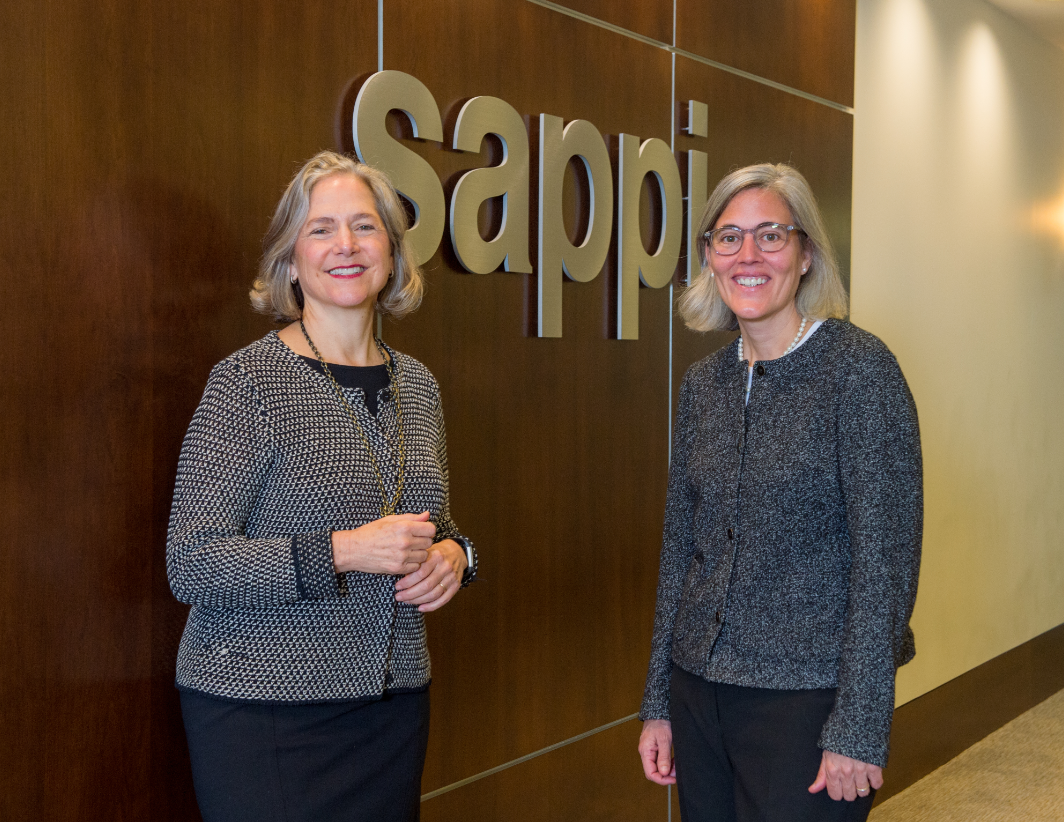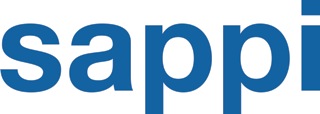A Dialogue with Sappi North America's Sustainability Leadership
Jennifer Miller and Laura Thompson discuss emerging issues in sustainable business practices

Q: Sappi North America has made a strategic commitment to forward-looking sustainability practices for nearly ten years. What do you see as the hallmarks of world-class sustainability practice?
JM: We find that much of what was important ten years ago is still critical. First and foremost, and we really focus on this at Sappi, is ownership from the very top of the organization, including the Board of Directors. Also critical is integrating all sustainability initiatives into the company’s regular capital, operating and strategic business plans, establishing forward-looking public goals and committing to transparent reporting of performance. We see the discipline we bring to sustainability translating to real value, building a corporate brand that stands for integrity, trust and thought leadership. A brand valued by employees, customers and shareholders alike.
LT: In fact, capturing insights from key stakeholder groups continues to be a key priority for us. Transparent and consistent reporting of sustainability performance is critical to all stakeholders, and their expectations are becoming more sophisticated and complex. Beyond our annual regional and global sustainability reports, we have many formats and forums for sharing performance information with our constituents, ranging from detailed instruments like the Carbon Disclosure Project and the Environmental Paper Assessment Tool (EPAT) to our recently relaunched corporate website where sustainability is represented as a core element of the site. We communicate at many levels to ensure that information is easily accessible to our many constituents.
Q: Companies are expected to disclose more details about their sustainability performance, including information about their supply chain. How is Sappi North America reacting to this trend?
JM: The challenge is to seek out scalable and balanced solutions that are consistent with our principles, e.g., to meet a legitimate and sincere customer need for information without disclosing proprietary information or creating confusion through a system of ad hoc responses to one-off requests. Again, we have found tools like EPAT to be helpful in consistently reporting environmental performance against key indicators, and we are now exploring other programs which could provide similar consistent frameworks for evaluating supply chain performance.
LT: We are very thoughtful in our approach. Data integrity is crucial, as is insuring that a tool or survey instrument is free from bias. We have purposely stayed away from scorecards that favor one certification program over another. We rely on reporting mechanisms like the Global Reporting Initiative standards, where there is industry-wide acceptance, and take a very fact-based and science-driven approach. Of course, the integrity of our internal reporting and governance structures provides a great deal of assurance to us that what we disclose is accurate and complete.
Q: That raises an interesting point. What is the importance of third-party verification in regards to the quality of data and management systems?
LT: Several of our management systems (like safety and quality) are certified by third parties. We also use multiple certification standards in support of our wood and fiber procurement policy. The SFI® Fiber Sourcing and FSC® Controlled Wood standards offer assurances of legality, traceability and the avoidance of controversial sources while the chain of custody standards help trace fiber from certified sources through the supply chain. Where data is not examined by third parties, we use our own resources. For example, a portion of our sustainability protocols and data are audited internally every year.
Q: As Sappi’s business continues to evolve and diversify, and new product offerings are launched every year, what challenges do you see in the realm of sustainability?
JM: Our strong governance and approach provides a solid foundation for all four business units. We have always taken a holistic view of issues, from responsible sourcing to understanding the end of life of our products. These are the principles that we follow whether we are talking about graphic papers for communication and design, dissolving pulp sold into textiles, packaging that is used in the food industry or specialty release papers sold for their microbiological suppression properties for use in hospitals and nursing homes.
LT: It is an exciting time! Diversification is providing us with opportunities to get to know new stakeholders which bring different perspectives to our industry. For example, within the textile supply chain there is a very high level of interest in social issues and material health. There is also a new set of tools that we are evaluating, like the Sustainable Apparel Coalition’s Higg Index, the leading sustainability assessment for the textile supply chain. This brings us back to the issue of scalability and the importance of collaboration. While many industries face similar issues, there has been a proliferation of redundant evaluation tools. However, the Outdoor Industry Association is working on two very important convergence projects—trying to find the common elements in various tools, like the social modules within Higg Index, Sedex and the SA 8000 social auditing standard. Aligning these mechanisms provides scalability, efficiency and consistency in reporting which ultimately leads to greater comprehension among stakeholders.
Q: The field of impact investment continues to grow. How do you see this shaping Sappi’s strategy?
JM: As a publicly held manufacturing company, we must recognize the ever growing importance of Environmental Social and Governance (ESG) ratings in the investment community. There are numerous signs that what used to be on the periphery is now mainstream, including Standard and Poor’s recent acquisition of Trucost. When one of the world’s foremost index providers acquires a leading firm in carbon accounting, environmental data and risk analysis, it sends a clear message about the importance of sustainability reporting.
LT: We are experiencing an evolution in how sustainability is viewed and valued by the investment community. In the ten years that I’ve worked in this field I have seen a shift in how ESG criteria are used. Initially investors used sustainability as a filtering mechanism to avoid certain stocks simply due to the nature of their business. Then ESG scores were used by investors to actively select stocks based on company sustainability performance. As its name suggests, with impact investing, some investors have expressed a willingness to forgo higher financial returns to support companies that make a positive and significant impact on society.
JM: At Sappi, we don’t believe you need to make a choice between financial return and a core commitment to sustainable development. We welcome the viewpoints of impact investors and index firms that take into account sustainability performance. As a wood products natural resource company diversifying into paper-based packaging, cellulose-based textiles and other biomaterials we are an attractive investment to those investors seeking alternatives to fossil-fuel-based materials. Everything we do, from our strong corporate culture of risk management, our commitment to listen and respond to the wide variety of customer needs, our focus and discipline in setting and achieving forward-looking goals—all will result in continued financial success and sustainability performance that will be recognized by investors, employees and customers alike.
Jennifer Miller serves as Sappi’s Chief Business Sustainability Officer and is focused on identifying strategic growth and diversification opportunities for the company as well as leading the sustainability strategies for all four of Sappi North America’s businesses.
Laura Thompson, PhD, is Sappi’s Director of Sustainability and Policy Initiatives and leads Sappi North America’s cross-functional Sustainability Council in addition to serving as the regional representative to Sappi Limited’s Group Sustainability Council.
Read more from Sappi North America's 2016 Sustainability Report here: http://bit.ly/SNA-2016SR

